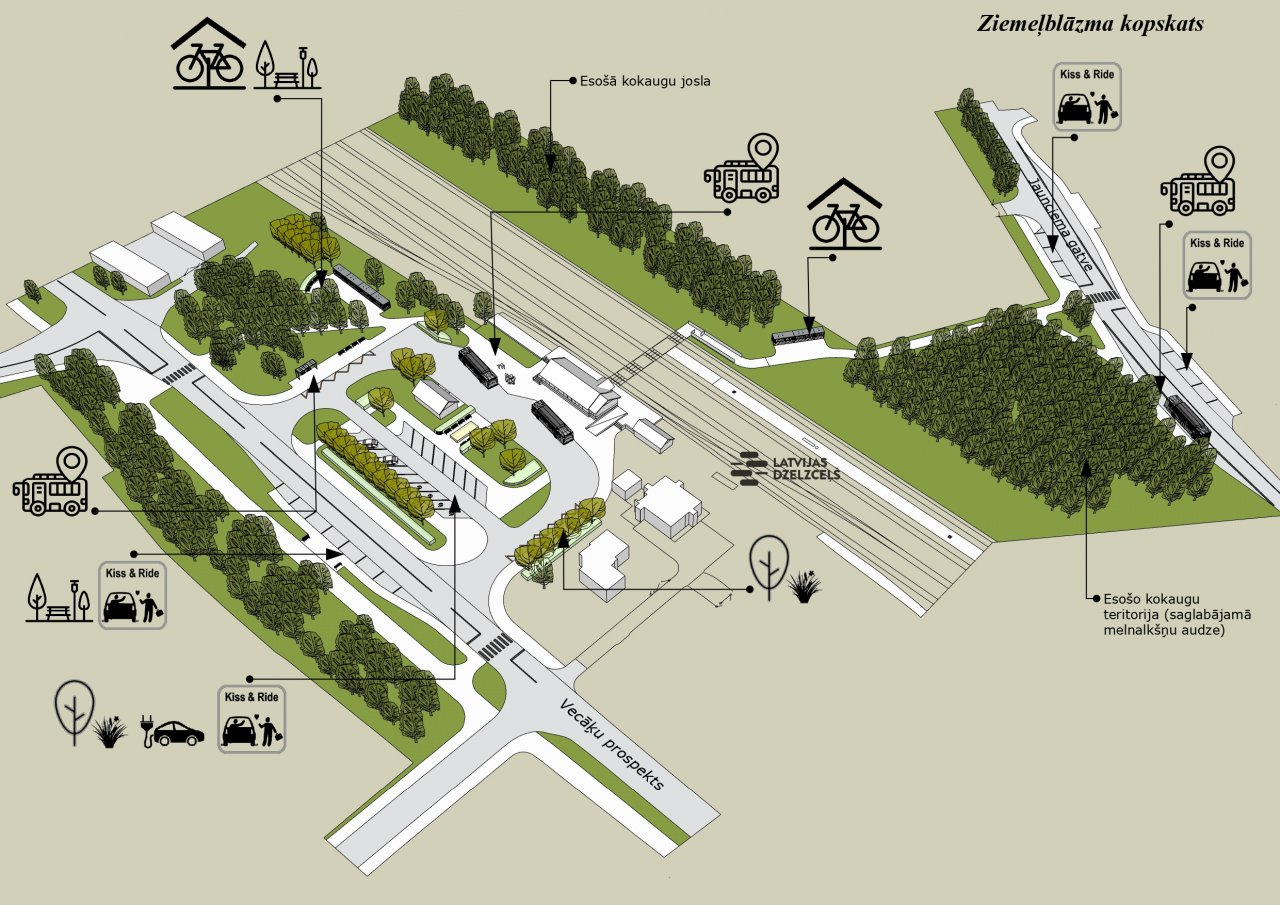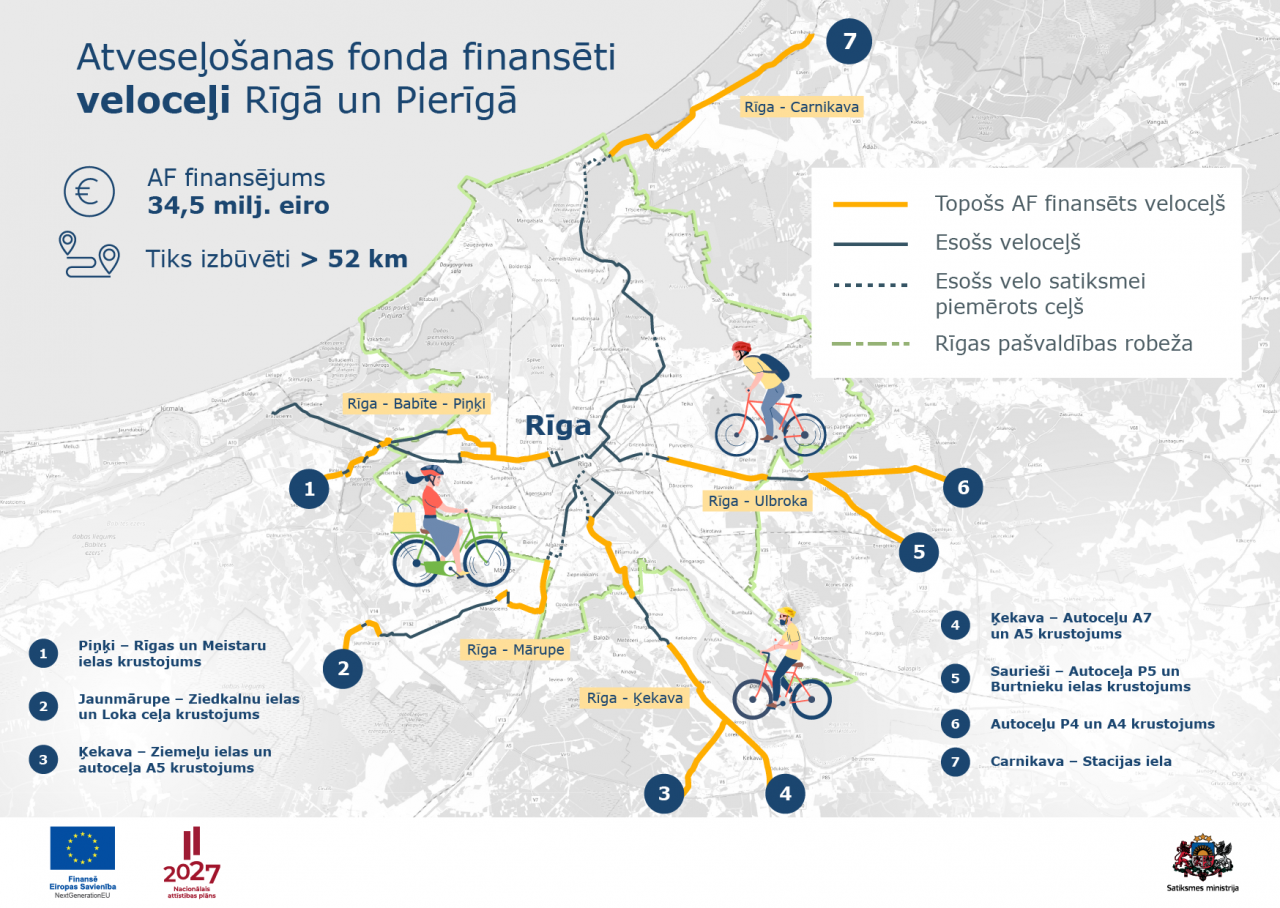The Ministry of Transport (MoT) has prepared regulatory provisions to acquire the European Union (EU) funds to build a multimodal public transport network with public transport mobility (connection) points, known as Stations 2.0. The goal is to promote convenient, sustainable, and diverse mobility for the residents by strengthening the railway as the backbone of public transport. The regulations stipulate that municipalities and municipal enterprises will have the opportunity to apply for funding to implement 25 Station 2.0 projects. At present, these regulations are in the proccess of coordination with other governmental institutions.
“We will utilize the available EU funds for the development of Stations 2.0, promoting the use of public transport in daily commuting while also improving infrastructure. By implementing the Station 2.0 concept, the connectivity between cities and regional public transport will be ensured, offering passengers multimodal travel options—various modes of transport available in one place,” said the Minister of Transport, Kaspars Briškens.
The total eligible funding for the implementation of the projects is EUR 88.7 million, including EUR 75.4 million from the EU funds and co-financing of no less than EUR 13.3 million. It is planned that at least five projects will be implemented by June 30, 2026, and at least 20 projects by December 31, 2029.
The implementation of the public transport mobility point concept or Station 2.0, is one of the measures that will encourage a shift in residents' travel habits. This will reduce the negative environmental impact of transport and contribute to achieving the EU's climate neutrality goal.
The regulations stipulate that financial support will be provided in the form of grants for public infrastructure development within the national territory to promote the development of a multimodal public transport network with the railway as the backbone of the public transport system, while also promoting micromobility. The project will establish public transport connection points, known as Stations 2.0, including parking facilities (Park & Ride) at these stations, charging stations, and appropriate fee-based infrastructure, using smart, digital, and environmentally friendly solutions.
Additional information
With Recovery and Resilience Facility (RRF) financing amounting to EUR 31.29 million, the enhancement of eight railway stations in Riga and the surrounding areas is planned to provide residents with access to multiple services in one place. The public transport connection points—stations with expanded functionality, known as Stations 2.0—are being developed to create an infrastructure where passengers can easily transfer from private to public transport, leave their cars or bicycles in a free parking lot, and continue their journey by train, city or regional bus. Such multifunctional Stations 2.0 are being developed in Bolderāja, Šķirotava, Zemitāni, Sarkandaugava, Dauderi, Ziemeļblāzma, Carnikava, and Saulkrasti. This will ensure the connection of the railway with city public transport, bicycle and pedestrian infrastructure, and other solutions that promote sustainable mobility.
It is planned that the bicycle connections to be created at the Ziemeļblāzma, Dauderi, and Sarkandaugava stations will be integrated into the existing bicycle infrastructure of Riga. Šķirotava station will be connected with the constructed extension of the tram and trolleybus lines and with the planned bicycle infrastructure. The development of the multifunctional stations or Stations 2.0 in Riga will be implemented by the Riga city municipality, while outside Riga this will be carried out by the municipalities in the surrounding areas.


